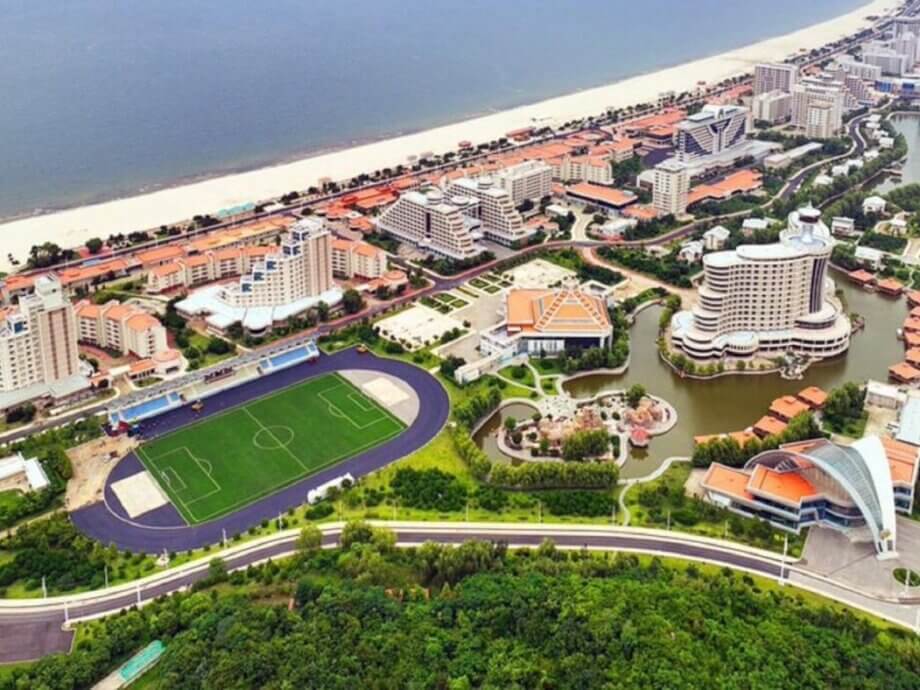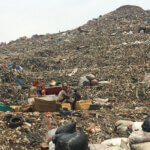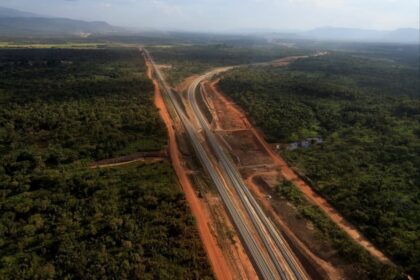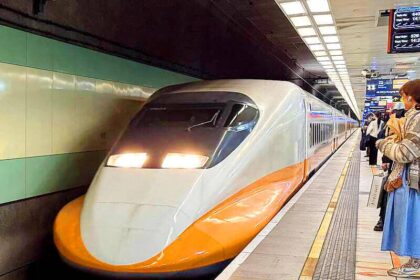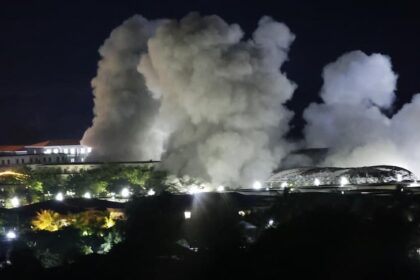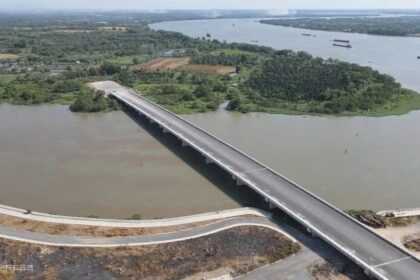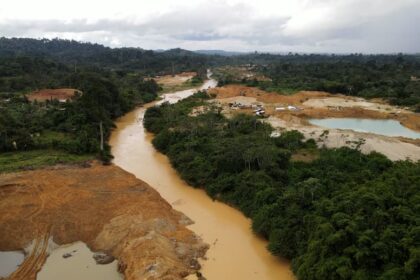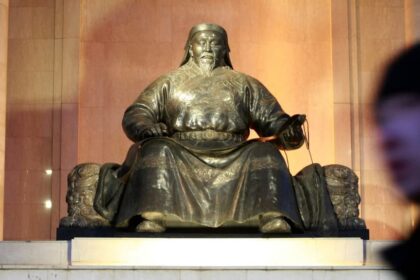North Korea Unveils the Wonsan-Kalma Beach Resort
North Korea has officially opened the Wonsan-Kalma Coastal Tourist Zone, a sprawling beach resort on the country’s east coast, marking what leader Kim Jong Un calls “one of the greatest successes this year.” The resort, which can accommodate up to 20,000 guests, is the largest tourism project ever undertaken by the reclusive state. Its opening is being closely watched by international observers, not only for its economic ambitions but also for its geopolitical implications—particularly the focus on attracting Russian tourists amid deepening ties between Pyongyang and Moscow.
- North Korea Unveils the Wonsan-Kalma Beach Resort
- What Is the Wonsan-Kalma Resort?
- Why Target Russian Tourists?
- Tourism, Sanctions, and Economic Strategy
- Infrastructure and Access: Can the Resort Succeed?
- Geopolitical Context: Tourism as Diplomacy
- Inside the Resort: Luxury Amid Hardship
- Historical Precedents: Tourism in North Korea
- Expert Perspectives: Will the Resort Succeed?
- Broader Implications: Tourism as a Tool of Statecraft
- In Summary
The grand opening ceremony, held on June 25, 2025, was attended by Kim Jong Un, his wife Ri Sol-ju, their daughter Kim Ju-ae, and Kim’s sister Kim Yo-jong. The presence of Russian Ambassador Alexander Matsegora and his embassy staff as special guests underscored the diplomatic significance of the event. The resort is set to open to domestic visitors on July 1, with Russian tourists expected to follow soon after.
What Is the Wonsan-Kalma Resort?
The Wonsan-Kalma resort stretches over a 4-kilometer (2.5-mile) section of coastline near the city of Wonsan, a region historically significant to the Kim family and North Korea’s elite. The development features a mix of high-rise hotels, VIP villas, budget accommodations, restaurants, shopping centers, sports facilities, and a water park. According to state media, the resort is designed to offer both domestic and international visitors a range of experiences, from beachside relaxation to adventure activities.
Kim Jong Un, who spent much of his childhood in Wonsan, has long envisioned transforming the area into a showcase for North Korean tourism. The project was first announced in 2013, with construction beginning in 2015. Originally slated for completion in 2019 to coincide with the birth anniversary of Kim Il-sung, the country’s founder, the resort faced repeated delays due to international sanctions, material shortages, and the COVID-19 pandemic. Construction resumed in earnest in 2024, reportedly with material and economic support from Russia.
Why Target Russian Tourists?
While North Korea has historically relied on Chinese tourists for its limited international tourism sector, the Wonsan-Kalma resort’s initial focus is squarely on Russian visitors. This shift reflects the changing geopolitical landscape in Northeast Asia, as Pyongyang and Moscow strengthen their partnership in the face of Western sanctions and diplomatic isolation.
Russian tourists are expected to begin arriving as early as July 7, with Vladivostok-based travel agencies offering eight-day package tours that include flights, accommodation at the resort, and excursions to other North Korean attractions such as the Masikryong Ski Resort. The tours are priced at around $1,840, targeting a mid- to high-end market. The reopening of rail and air links between Russia and North Korea further facilitates this new tourism corridor.
South Korea’s Unification Ministry has noted that the prominent invitation of the Russian ambassador to the opening ceremony was likely intended to signal North Korea’s intent to court Russian tourists. The ministry also suggested that Russian material support may have been instrumental in completing the long-delayed project.
Tourism, Sanctions, and Economic Strategy
North Korea’s push to develop tourism is part of a broader strategy to earn foreign currency and revitalize its struggling economy. Tourism is one of the few sectors not explicitly banned under United Nations sanctions, provided it does not involve bulk cash transfers or joint ventures with North Korean entities. Individual tourists paying their own expenses on a cost-reimbursement basis are generally considered to be in compliance with international regulations.
However, the legal landscape remains complex. UN Security Council Resolution 2270 prohibits the transfer of bulk cash to North Korea, while Resolution 2375 bans new joint ventures with North Korean entities. This means that while tourism itself is not a violation, the structure of tourism operations must be carefully managed to avoid breaching sanctions.
For North Korea, the Wonsan-Kalma resort represents a significant investment—one that will require a steady stream of foreign visitors to recoup costs and generate revenue. Analysts believe that, despite the current focus on Russian tourists, North Korea will eventually need to reopen to Chinese group tours, which accounted for over 90% of foreign visitors before the pandemic. For now, however, Chinese group tours remain suspended, and there are no concrete signs of their imminent resumption.
Infrastructure and Access: Can the Resort Succeed?
Despite the fanfare, significant questions remain about the practical viability of the Wonsan-Kalma resort as an international tourism destination. North Korea’s transportation infrastructure is limited, with only a handful of flights and trains connecting the country to the outside world. According to South Korean officials, the maximum number of tourists who could travel from Pyongyang to the resort via flights from Vladivostok is around 170 per day—a far cry from the resort’s stated capacity of 20,000 guests.
To address these limitations, North Korea has built a new train station and an international airport adjacent to the resort. These infrastructure upgrades suggest a long-term vision of expanding access, but for now, the flow of foreign tourists will be tightly controlled and limited in scale.
Moreover, access to the resort for ordinary North Koreans is expected to remain restricted, with the initial domestic visitors likely drawn from the privileged elite in Pyongyang and other major cities. This mirrors the country’s broader approach to tourism, which has historically been used as a tool for both economic gain and social control.
Geopolitical Context: Tourism as Diplomacy
The opening of the Wonsan-Kalma resort comes at a time of heightened geopolitical tension in the region. North Korea’s alignment with Russia has deepened in recent years, particularly as Pyongyang has provided military support to Moscow in its ongoing war against Ukraine. In return, North Korea is believed to have received economic and material assistance, which may have helped complete the resort.
The presence of the Russian ambassador at the opening ceremony, along with the resumption of cross-border rail and air services, highlights the strategic importance of the Russia-North Korea relationship. For Pyongyang, attracting Russian tourists is not just about economic gain—it is also a form of soft diplomacy, signaling solidarity with Moscow and a willingness to engage selectively with the outside world.
At the same time, North Korea’s relations with China, its traditional ally and largest trading partner, appear to have cooled. Analysts suggest that Beijing is reluctant to fully embrace Pyongyang’s anti-Western alignment with Russia, and Chinese group tours remain suspended. Nonetheless, most experts believe that North Korea will eventually need to reopen to Chinese tourists to make its tourism ambitions financially viable.
Inside the Resort: Luxury Amid Hardship
State media have portrayed the Wonsan-Kalma resort as a “national treasure-level tourism city,” complete with world-class amenities and entertainment. Images from the opening ceremony showed Kim Jong Un and his family relaxing poolside, watching guests enjoy water slides and other attractions. The resort’s facilities include high-rise hotels, VIP cottages, shopping malls, sports complexes, and a water park—features designed to appeal to both domestic elites and foreign visitors.
However, the reality of life in North Korea stands in stark contrast to the luxury on display at the resort. The country remains one of the poorest and most isolated in the world, with chronic food shortages and widespread poverty. Human rights observers have described North Korea as a “stifling, claustrophobic environment, where life is a daily struggle devoid of hope.”
Tourism in North Korea is tightly controlled, with foreign visitors subject to constant surveillance and strict rules about what they can see and photograph. Previous tourist experiences, such as ski holidays at the Masikryong resort, have been heavily monitored, with choreographed performances and limited interaction with ordinary citizens. The Wonsan-Kalma resort is expected to operate under similar restrictions, raising questions about the authenticity and appeal of the experience for international travelers.
Historical Precedents: Tourism in North Korea
North Korea’s most notable experiment with international tourism came in the late 1990s, when it opened the scenic Mount Kumgang area to visitors from South Korea. The project was hailed as a symbol of inter-Korean engagement and brought nearly two million South Korean tourists to the country over a decade, providing Pyongyang with a critical stream of hard currency. However, the initiative ended abruptly in 2008 after a South Korean tourist was shot by a North Korean soldier, and the sites were later demolished.
Since then, North Korea has made several attempts to revive its tourism sector, with limited success. The Wonsan-Kalma resort is the latest—and by far the most ambitious—effort to position the country as a destination for international travelers. Whether it can overcome the challenges of infrastructure, sanctions, and political isolation remains to be seen.
Expert Perspectives: Will the Resort Succeed?
Reactions to the opening of the Wonsan-Kalma resort have been mixed. Some analysts see it as a bold attempt by Kim Jong Un to diversify the country’s economy and project an image of modernization. Others are skeptical about its prospects, citing the limited appeal of North Korea as a tourist destination and the ongoing restrictions on foreign travel.
Lim Eul-chul, a professor at Kyungnam University’s Institute for Far Eastern Studies, notes that the initial target for the resort is likely to be the privileged domestic elite, with Russian tourists following as part of a phased rollout. He adds that the project reflects Kim’s vision of “socialist civilization” and his strategic effort to seek economic breakthroughs through tourism.
Edward Howell, a North Korea expert at the University of Oxford, is more cautious:
“Whether this resort will provide Kim Jong Un with his much-needed economic gain in the long-term, however, remains to be seen: Wonsan-Kalma is hardly a tourist hotspot in the first place.”
Tour operators who have previously brought Western tourists to North Korea are also skeptical. Rowan Beard, co-founder of Young Pioneer Tours, told the BBC:
“I was hoping this might signal a broader reopening to international tourism, but unfortunately, that doesn’t seem to be the case for now.”
Nonetheless, some see niche appeal for adventurous travelers drawn to unconventional destinations. Elliott Davies, director of Uri Tours, commented:
“It’s intriguing to experience something as familiar as a beach resort that’s been shaped within the unique cultural context of North Korea.”
Broader Implications: Tourism as a Tool of Statecraft
The launch of the Wonsan-Kalma resort is about more than just tourism. It is a carefully orchestrated display of North Korea’s ambitions, both economic and diplomatic. By showcasing modern amenities and inviting select foreign guests, Pyongyang aims to project an image of progress and openness—while maintaining strict control over who can visit and what they can see.
The resort also serves as a symbol of North Korea’s evolving foreign policy, as it pivots toward Russia and seeks new avenues for economic engagement in the face of ongoing sanctions. The personal involvement of Kim Jong Un and his family in the project underscores its importance to the regime’s narrative of national achievement and dynastic continuity.
In Summary
- North Korea has opened the Wonsan-Kalma Coastal Tourist Zone, its largest-ever tourism project, with capacity for 20,000 guests.
- The resort’s initial focus is on domestic visitors and Russian tourists, reflecting deepening ties between Pyongyang and Moscow.
- Construction was delayed for years due to sanctions and the pandemic, but resumed in 2024, reportedly with Russian support.
- Tourism is seen as a key source of foreign currency, but legal and logistical challenges remain due to international sanctions and limited infrastructure.
- Chinese group tours, once the mainstay of North Korea’s tourism sector, remain suspended, and broader international access is unlikely in the near term.
- The resort’s opening is as much a geopolitical statement as an economic initiative, signaling North Korea’s intent to engage selectively with the outside world.
- Experts are divided on the resort’s prospects, with some seeing niche appeal and others doubting its long-term viability.
- The Wonsan-Kalma project highlights the complexities of tourism in North Korea, where luxury developments coexist with widespread poverty and strict state control.


